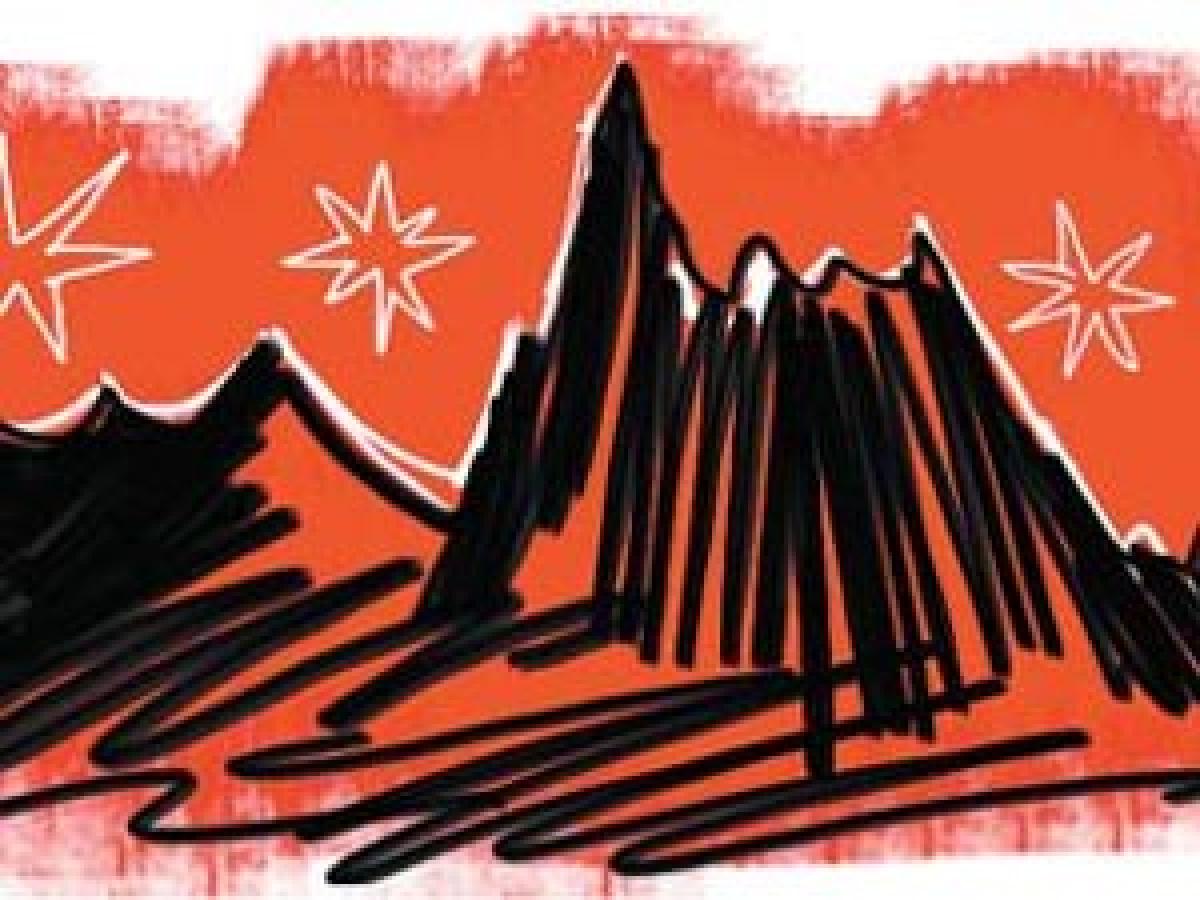Live
- Chanchalguda Jail Officials Say They Haven't Received Bail Papers Yet, Allu Arjun May Stay in Jail Tonight
- BJP leaders present evidence of illegal voters in Delhi, urge EC for swift action
- Exams will not be cancelled: BPSC chairman
- Nagesh Trophy: Karnataka, T.N win in Group A; Bihar, Rajasthan triumph in Group B
- YS Jagan condemns the arrest of Allu Arjun
- Economic and digital corridors to maritime connectivity, India and Italy building vision for future, says Italian Ambassador
- SMAT 2024: Patidar's heroics guide Madhya Pradesh to final after 13 years
- CCPA issues notices to 17 entities for violating direct selling rules
- Mamata expresses satisfaction over speedy conviction in minor girl rape-murder case
- Transparent Survey Process for Indiramma Housing Scheme Directed by District Collector
Just In

Prime Minister Narendra Modi\'s reference to Gilgit-Baltistan may have had the strategic objective of countering Pakistan\'s claim on Jammu and Kashmir. In doing so, he has also focussed attention on the almost forgotten history of a strategically-located region whose political fate is cloaked in ambiguity.
New Delhi : Prime Minister Narendra Modi's reference to Gilgit-Baltistan may have had the strategic objective of countering Pakistan's claim on Jammu and Kashmir. In doing so, he has also focussed attention on the almost forgotten history of a strategically-located region whose political fate is cloaked in ambiguity.
There are two independence days for the over one million people in the disputed Gilgit-Baltistan: August 14 when Pakistan celebrates its independence, and November 1, when the region remembers its freedom that, ironically, lasted for only 21 days in 1947. Since then, sovereignty and any constitutional status in Pakistan have remained vague and elusive for this Shia-dominated region, through which runs the river Indus and is home to many spectacular mountain peaks, nearly equal in height to Mount Everest.
Previously known as the Northern Areas, it borders China and Afghanistan to the north, Pakistan's Khyber-Pakhtunkhwa province to the west and India to the east, leading to the frozen battlefield of the Siachen glacier. The location makes it strategically as important for China and India, as it is for Pakistan.
As far as India is concerned, Gilgit-Baltistan was part of the erstwhile Jammu and Kashmir State that existed in 1947 and, therefore, included in the territorial dispute with Pakistan. Pakistan does not buy this. It says the region, which was incorporated in Jammu and Kashmir by the Dogra rulers in 1846, had actually never been part of the princely state.
To support its claim, Islamabad cites a 1935 lease deed that gave control of the region to the British for 60 years. Pakistan says that the Dogra kingdom had rescinded the control of the territory and the last Jammu and Kashmir king, Maharaja Hari Singh, had no authority on the region, spread over nearly 73,000 sq km.
But then how did Pakistan get control of the region?
When the subcontinent was divided in 1947, the region, like the rest of Jammu and Kashmir, found itself neither part of India nor Pakistan. Even though the lease deed with the British was cancelled on August 1, 1947, and the Dogras were effectively again in charge of the region, Hari Singh faced a rebellion by a local commander of the Gilgit Scouts, Colonel Mirza Hassan Khan.
Khan declared Gilgit-Baltistan as an independent entity on November 2, 1947 – two days after Hari Singh acceded to India on October 31. Twenty-one days later, Pakistan moved into the region and annexed it militarily. Till April 1949, Gilgit-Baltistan was treated as a part of the Kashmir that was occupied by Pakistan. But on April 28, 1949, a pact – called the Karachi Agreement – was signed with the government of Pakistan-administered Kashmir that gave control of the affairs of Gilgit directly to the central government, then based in Karachi.
Significantly, no leader from the region was part of the agreement. Pakistan later "gifted" a part of Gilgit-Baltistan towards the extreme north to China for the construction of the Karakoram Highway. China has been pursuing an aggressive engagement strategy in the region by making huge investments to tap its mineral and hydel power resources. The Chinese inroads in the disputed region and Pakistan's repressive rule amid alleged human rights abuses have triggered a separatist unrest in the region. But little is heard of this unrest as there are stringent federal laws that make the region inaccessible to foreigners and few media report from there.
Still, there are enough reports filtering through that say the people of the region are strongly resisting the 3,000-km-long China-Pakistan Economic Corridor (CPEC) in which Beijing has invested over $46 billion. The corridor will link western China to southern Pakistan through a network of roads, railway lines and pipelines. Pakistan says that the project will bring about socio-economic changes in the impoverished region. But local residents fear that it is being done to engineer demographic changes in the region and want to be included in any possible India-Pakistan negotiations to solve the Kashmir dispute that has soured ties between the two nations for the last nearly 70 years.
Pakistan has militarily crushed any dissent in Gilgit. In a latest example of its repressive rule, Federal Minister for Planning Ahsan Iqbal has threatened to invoke stringent anti-terrorism laws against those protesting against the CPEC, according to Gilgit activist Senge Hasnan Sering. Sering, based in Washington, is the president of Institute for Gilgit Baltistan Studies and backs the resistance movement in the region. The government warning comes days after the separatist Awami Action Committee of Gilgit-Baltistan called for an indefinite strike for rolling back of the CPEC.
By Aadil Mir & Ruwa Shah

© 2024 Hyderabad Media House Limited/The Hans India. All rights reserved. Powered by hocalwire.com







